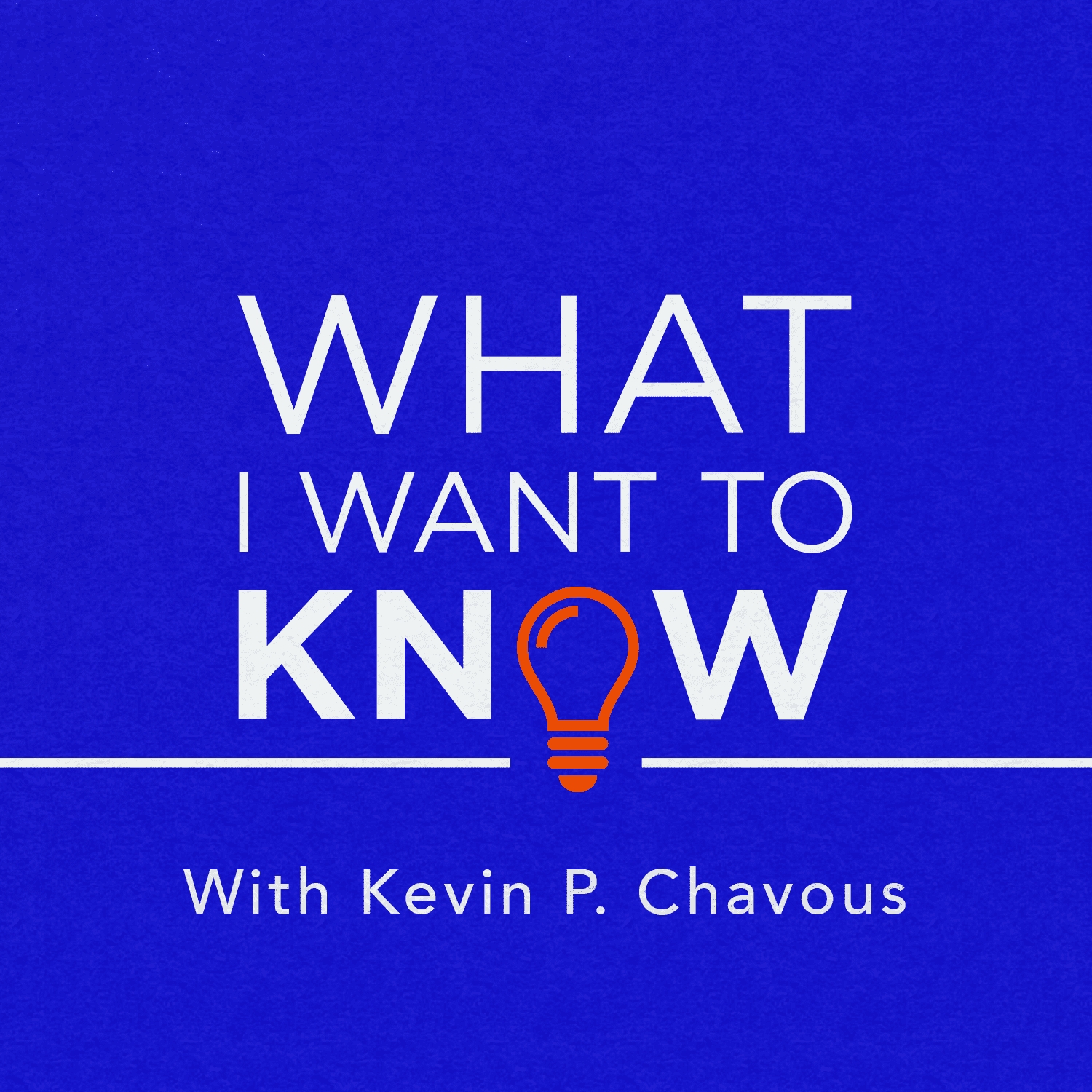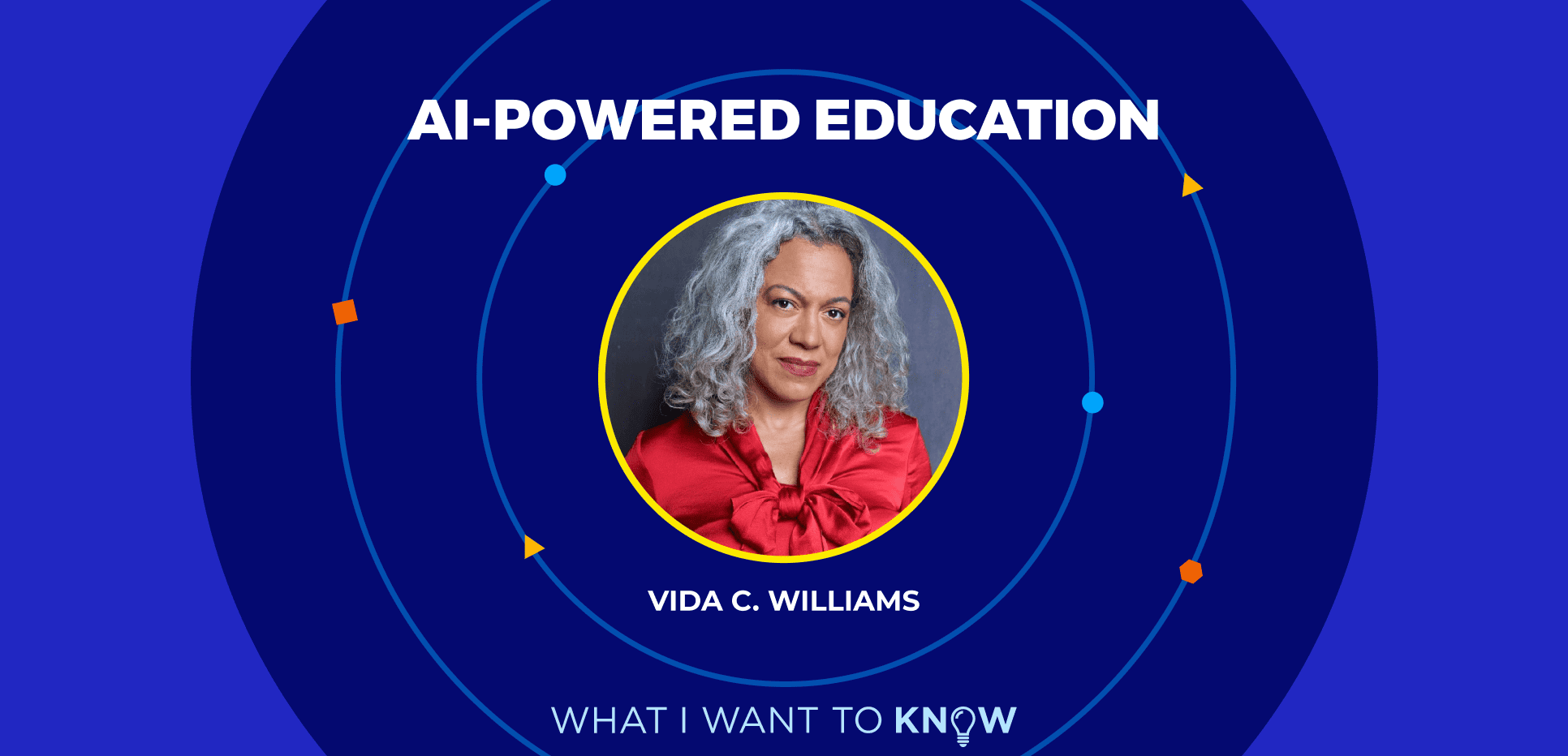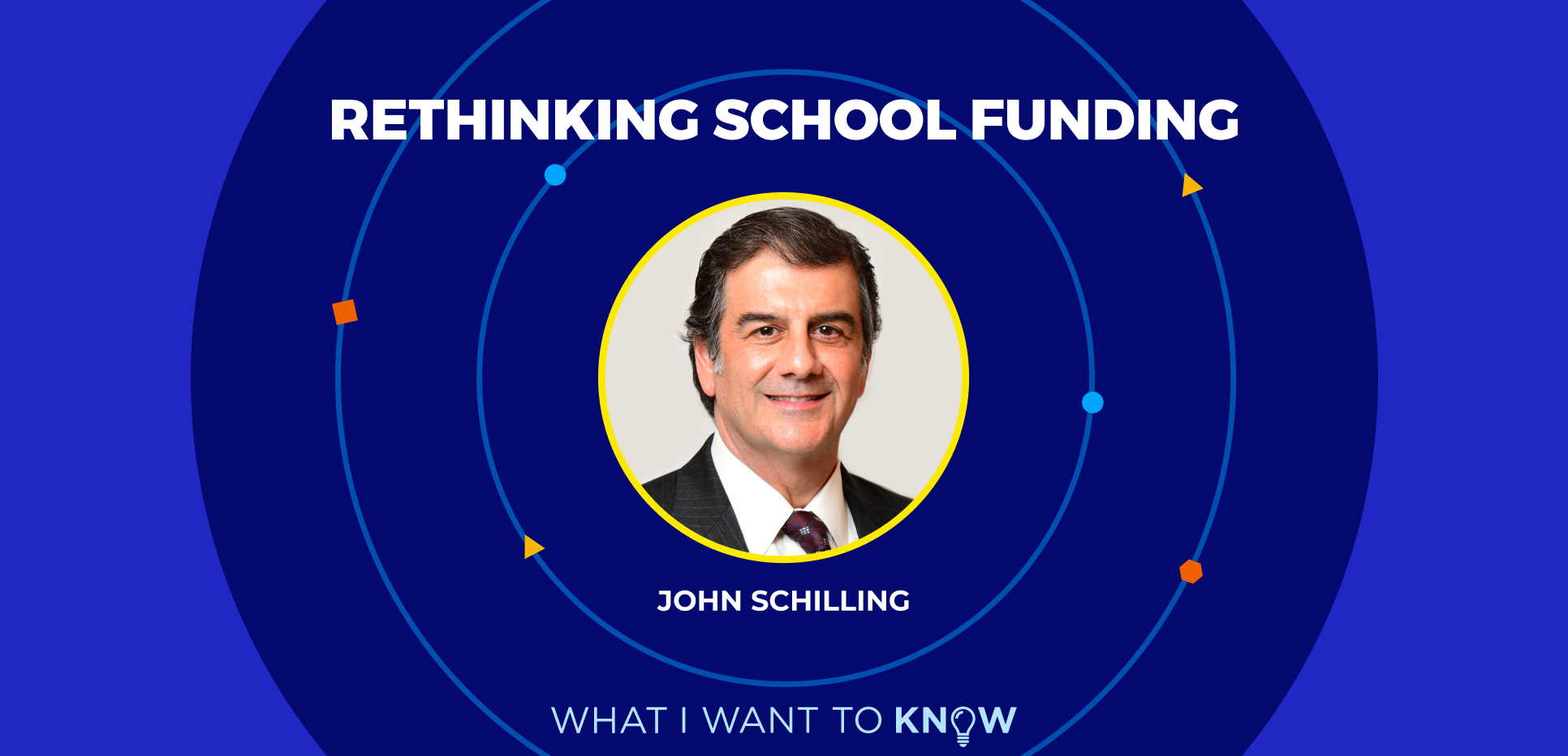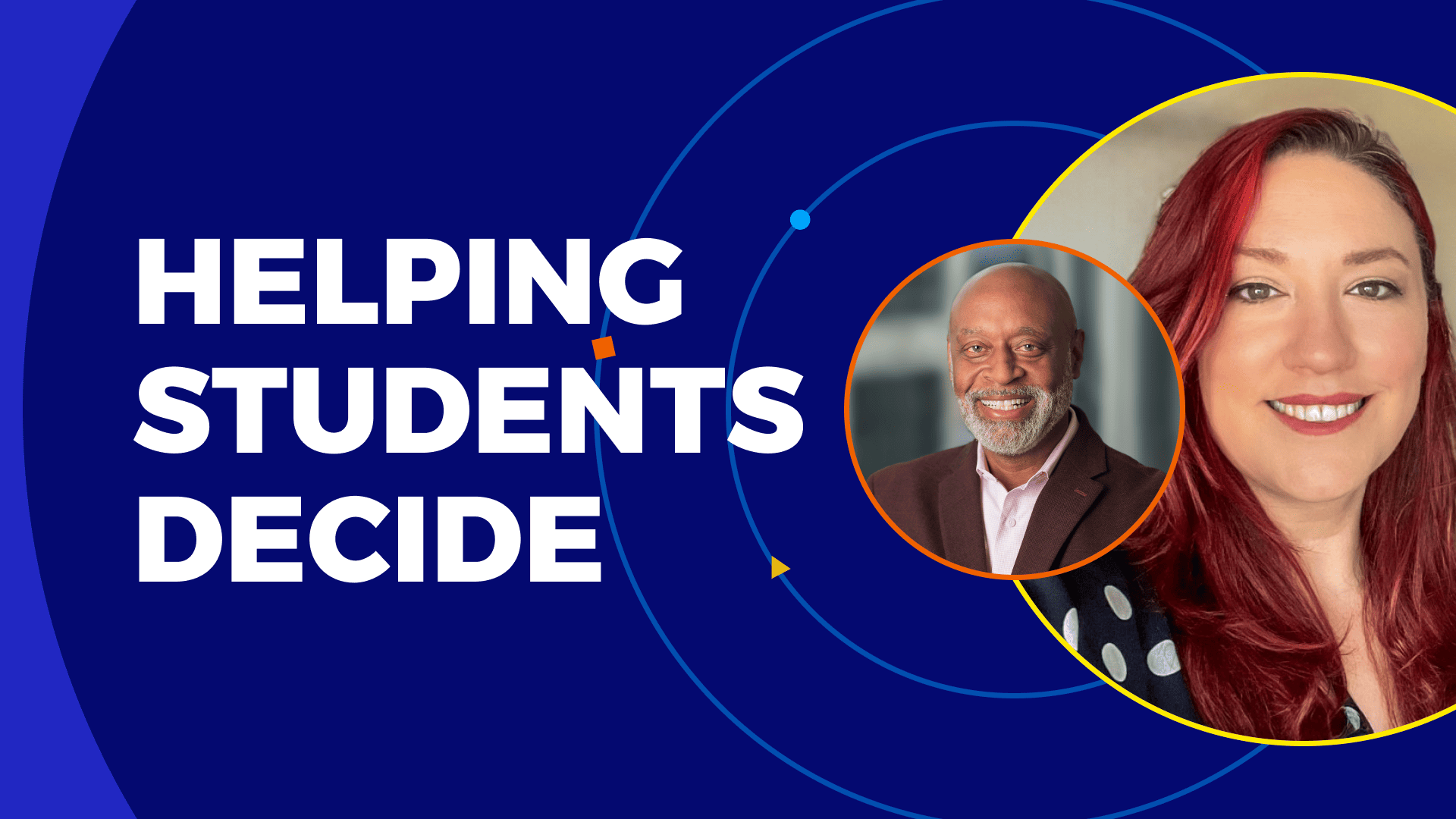The child poverty rate in America was 16% as of the 2020 Census. This amounts to 11.6 million children living in poverty in the U.S.
Why are so many kids growing up in poverty in the United States? How does the lack of social safety nets disproportionately affect children in America? How can we support children and help them learn, grow, and thrive in an ever-changing world?
In this episode, Kevin talks to author Anya Kamenetz about how we can support children in poverty in their educational journey.
Listen to the Full Audio
Listen on: Apple Podcast, Spotify
Transcript
Kevin: The child poverty rate in America was 16% as of the 2020 census; this amounts to 11.6 million children living in poverty in the United States. Why are so many kids growing up in poverty in this country? How does the lack of social safety nets disproportionately affect children in America? And what can we do to support children so they can learn, grow, and thrive in an ever-changing world? This is What I Want to Know. And today I’m joined by Anya Kamenetz to find out. Anya Kamenetz is an author and speaker who focuses on generational justice, climate change, and education as a senior advisor to the Aspen Institute.
Kevin: A former NPR correspondent, she has reported on education for many years. Her latest book, “The Stolen Year,” explores the impact of the pandemic on the public school system, an important social safety net for children. She joins us today to discuss how we can raise thriving kids in an ever-changing world. Anya, welcome to the show. Anya, I’m going to tell you I’m really excited to have you on the show. You have always had an interest in education, and I have to jokingly say that it’s great for me to interview you after years of you periodically interviewing me. I almost feel the power position has changed.
Anya: Well, I’m getting a little nervous now, but I do appreciate you reaching out, and I’ve always appreciated the way that you’ve tried to answer questions and be an honest broker. So I’m excited that you’re in this position.
Kevin: Yeah. And I’m excited about your work. I mean, you tried to get behind and underneath an issue. You weren’t always topical, on the surface. I’m not just saying that. And now, with the work you’re doing, it’s exciting to see where you’re headed and that you’re trying to take it to the next level. But in doing research on you, and I did some research, but it’s always like, “What is she writing? What is she saying? What is she into?” I understand you come from a family of writers. That was pretty interesting to hear.
Anya: Oh, yeah. Yeah. So my parents were both English professors at Louisiana State University, and my mother writes fiction. My father writes nonfiction and poetry, actually.
Kevin: Oh, wow. And so you had no choice but to write.
Anya: I think that when I was little, I wanted to be an editor. Because my idea was that I would be my parents’ boss then if I was the editor.
Kevin: Oh, I get it. I get it. You wanted to be editor so you could edit what they wrote and clean it up. But when you became a writer, how did you decide to get into journalism? And then, what led the focus to education, which you became known for?
Anya: So, the pivots for me happened in college where I was taking writing classes, I was performing poetry, and I was working on my campus magazine. And my sophomore year, me and my friend, we broke a story, and it was a local, a campus scandal, and everybody was rushing to get the magazine as soon as it came out. And the daily newspaper wasn’t covering it because it was about their editor, right?
Kevin: Yeah.
Anya: So, all of a sudden, I had this feeling of, “Oh, people are excited to read what I’m writing because it’s about something that’s important to them,” where before I was like, “Please come to my little poetry reading,” there’ll be like 10 people there. And I think for me, that also connected, of course, to my interest in justice and doing what’s good and doing what’s right. And as much as my parents were very much literary-artistic types, they also really impressed on me the importance of community and activism and doing the right thing. And so, I think that’s really where journalism sat for me in the intersection between those two.
Kevin: You talk about justice. I want to, in a little bit, talk to you about your newest book, “Stolen Year.” You’ve written several books, but you mentioned justice. I want you to tease out for us this notion of generational justice because that obviously takes on different connotations. What do you mean by that? What does that mean?
Anya: So, I think in the world, and I would say for me personally, and certainly in the education space, we have been growing in our understanding of the intersectional identities, right? And how people are affected by the racial group they grew up in, the neighborhood, the zip code they grew up in, poverty, whether they’re an immigrant — and these are all really important things — disability status. These don’t define us, but they are important in thinking about who is heard and who has the resources that they deserve. Oftentimes we forget to include children in that category and understand that children are cherished and loved, but they are also very vulnerable. And they are oftentimes forgotten because they lack some of the rights and recognitions that adults have.
And so, there are many, many people who want to come in and say, “We are doing what’s best for the kids,” but we’re not always listening to them. And so, when I think about generational justice, I think about it in those ways. I’ve also been thinking about it in terms of: We live in an aging society, and people who are older than the standard also start to feel forgotten in different ways. So, can we build that empathy to think about: Just because I’m not working age or I’m not “the most productive member of society,” do I still have value?
Kevin: Yeah.
Anya: That’s right.
Kevin: You have often in — I’ve read some of your stuff — you clearly don’t think we’re treating our children well. Why is that?
Anya: Well, I mean, I can give you this statistical answer, right? We have this inordinate number of children living in poverty in one of the richest countries in the world, and that’s because we lack the basic building blocks of family-friendly policies that all of our peer countries have adopted in the last 40, 30, at least 20 years. And that is child support for family. So a child tax credit, which is like social security for children, paid family leave that allows people to take off time to be with their kids and doesn’t push so many mothers out of the workforce, and childcare subsidies. So, recognizing that zero to five is just as important as five to 18 and maybe even more so when it comes to wanting quality care and education for kids.
And without those policies, we just have a lot of suffering, frankly. I mean, we have a lot of kids living in single-parent households. We have a lot of kids who are going into the foster care system every year, oftentimes because of neglect, which is really a symptom of poverty, and we just don’t have the outcomes that we would expect to have, especially for, as you know, for all the money that we spend on education.
Kevin: Why don’t we have more of those subsidies, those programs, those dollars allocated in the way they should be for children?
Anya: So, in my book, “The Stolen Year,” in the process of researching that, I really dug into that question, and I found some surprising answers. I found that this has oftentimes been considered the domain of philanthropy, and it’s been considered the domain, especially starting in the Victorian era. We saw some of the first efforts to make children’s lives better through philanthropic efforts. So, charity, nurseries, day nurseries, the orphan trains and poor houses, workhouses for mothers and children. And these were things that were pet projects of wealthy women in society, often white women, and they stayed that way. There wasn’t the appetite to make them matters of policy in a different way from other areas in society. And what I describe is how we allowed public schools to grow and develop and take on more and more roles, but we didn’t have the appetite, for whatever reason, to make these public institutions.
And it took a lot of work to establish things like the free lunch program. Later on, in a more tricky way, and I want to be able to include myself in this conversation, the feminist movement in the ’70s also didn’t necessarily take up children as their main topic, because what they wanted was economic power. So they were arguing for women’s equal participation in employment. They didn’t always argue at the same time for, “We also want childcare,” because that was a tricky conversation to have, because women wanted to be seen as people that could have careers. And when men had careers, they didn’t have to worry about what was happening to the kids. So, if they uplifted children and said, “We want rights for women and rights for children,” it becomes harder to make that argument. And that’s my feeling that, no pun intended, that child-serving programs and institutions became orphaned in the American political sphere.
Kevin: I hope you’re enjoying this episode of What I Want to Know, one of the most downloaded K through 12 education podcasts in the country. Make sure you don’t miss any of these important topics. Subscribe to the show on Apple Podcasts, Spotify, or your favorite podcast or social media platform, and leave a rating and review so we can bring you more of the topics you want to hear about. Now, back to the conversation. But what about the argument that others will make? Because again, I came from the political world, as you know, and everyone says, “I will put more money in education. I will give more money to teachers.” And even right now you hear during these budget sessions that are taking place in state legislatures around the country, people are saying, “We’ve increased education spending.” Why don’t those increases matter with the things you’re talking about?
Anya: That is such an excellent question, and it’s worth scrutinizing. I think that oftentimes on the left, there’s an allergy to talking about why we’re not getting value for our money in education. Because there isn’t this huge gap in education spending in K-12 in the U.S. that we see on the child welfare side, right? I mean, this is a most shocking number on that, across the OECD countries, the wealthy countries: The average annual spending on zero to five is somewhere between $14,000 and $15,000. And in America it’s $500. So it’s a very dramatic gap. I think the shorthand reason that education spending doesn’t improve child welfare is that there are two different things. School is a very complicated apparatus that is for the learning of children.
But when you have children coming in, more than half of the kids coming into school are low income; 14% of the kids coming into school have a disability; one in four of school-aged children, I believe, have at least one immigrant parent. They’re dealing with so many different things that are outside of the purview of an eight-hour school day to address or to fix. And so, no matter how much money you have flowing into the school coffers, it’s not going to be able to address those issues.
Kevin: And also isn’t part of the problem, Anya, the fact that everything’s so bifurcated or segregated in terms of roles and responsibilities? You’ve got human services: They deal in most state and county governments within local governments, the social services system, the child welfare things you’re talking about. Then you’ve got the education system and sometimes the social services system; that’s where they would provide the nurses for the schools. But because of the budget, they can’t provide the full complements so that every school gets it. And as you said, the school budget deals with so many bureaucratic needs that it morphs into overtime. Should there be a separate child welfare system? And how would it coordinate within the structure of public education? Because already it’s so hard for that public education system to discharge its responsibilities around teaching and learning.
Anya: That’s a real policy wonk question. And I really appreciate you being interested in digging into this. One of the most provocative areas of research that I found in the book was about administrative burden. And that’s just a fancy way of saying that it is very hard to access the services that people need when they’re in poverty. And it requires proving eligibility. I mean, I had one of the mothers in my book — she has got eight children, a single mom living in really super substandard housing — and she spends her life going from office to office, appointment to appointment, trying to prove her eligibility for this and for that. Getting the subsidies, the WIC: WIC is different from food stamps.
Kevin: That’s right.
Anya: Right. So why are they two different programs? If you sign up, people say, “I need milk, and I need diapers,” right? So, just that’s one example. So, we could streamline the bureaucracy, and we could have a child welfare oriented system. We could also, I think, simplify it with a cash-based system, cash subsidies that are not restricted, and again, are universal, as well as a childcare subsidy system, which I think, practically speaking, you need to subsidize both sides of that. You need to subsidize the childcare centers, so they can pay their workers living wages as well as subsidizing the fees. But yeah, I mean, in the end, it just becomes a lot simpler to reduce a lot of those barriers, get rid of a lot of that bureaucracy, and just give families the resources that they need.
Kevin: And the other thing — I love those ideas — and the other thing which has worked has been episodic because the bureaucracy of schools and local governments often stranglehold this idea. But since kids spend the bulk of their day in schools, and even if the family’s trying to access certain social services to help the children, there has to be that coordination with the school system. How has COVID helped or hurt this coordination that needs to take place?
Anya: Such a great question. So, one of the schools that I spent time in when I was researching the book is called Buena Vista Horace Mann. And it’s actually the first public school in the country to have an onsite homeless shelter in the Mission District in San Francisco. And they do; they go on this logic that they really want to be able to surround those families with all the different kinds of support that they need. And it’s incredibly helpful. I mean, I talked to their on-the-ground coordinator of helping kids with their material needs as well as their mental health needs. And I think that there’s a huge interest in that. And I think one of the silver linings of the pandemic was, for kids that were able to stick with remote learning, there was a lowering of some of the barriers, paradoxically, between home and school.
There’s more communication now between home and school. A lot more teachers have the parents’ cell phone numbers, and they’re used to using these communications. The video screen was oftentimes a portal into kids’ experiences and in their home life. And so, there’s much more awareness now of those things. But I think that the appetite for radical re-imagining of what we deliver at school is lower because a lot of school districts are really struggling. They’re struggling with lower enrollment, which very soon, with the cliff of the ARP funds, is going to mean lower budgets. Here in New York, it already has meant cuts at certain schools. And so, the idea of increasing services and increasing coordination: I just feel like it’s going by the wayside with the burnout and the “let’s get through the next day” mentality that we have.
Kevin: Well, especially budget cuts, that means we can’t do more, but how can we do it differently with what we have?
Anya: Yeah. I mean, that’s really the key question. I do see schools trying to, for example, with mental health needs, right?
Kevin: Yes.
Anya: They can’t get by with the same level of support that they had before. So, they’re looking for community partnerships for referrals. The expansion of telehealth makes resources and therapists more available in rural parts of the country. So, they are trying to expand out what they can do and also grow their own. So, I know there have been some programs to bring people in and get them trained up as school counselors while they’re working in other positions in the school.
Kevin: How do we approach this cultural challenge of just generally understanding that we put our kids first in every sense of the word, and we actualize that as well? In your work, in your research, does anything come to mind as to how we can change that dynamic here?
Anya: That’s such a great question. I really believe that it’s about activating values that might be latent in people. Because when you really give them a chance to get in the mind frame and think about, “What do you really care about in this world? What kind of legacy do you want to leave? What do you want to be remembered for?” Chances are they’re going to talk about young people and future generations. And I’ll give you an example of that. In the work that I’m doing now, I’m thinking a lot about climate change. And we did a survey where we asked people about their concerns about climate change. And basically, two-thirds of them were very concerned. One-third of this less concerned group of Americans, kind of like maybe they’re not deniers, but they think it’s been politicized and overblown.
But when you ask them, “Do you think that we need to do something about climate change as a moral imperative for the sake of the young and future generations?” Even the least concerned, half of them agreed. Half of them said, “Yeah. You know what? I don’t think it’s that big a deal. But when you think about the young people and where things are going, yeah, I do think we have a moral imperative,” and that’s really powerful.
Kevin: It really is. But what do we do with that, though? I mean, I think that there has to be, and we see it even with social media, with TikTok, bucket challenges. It’s just stuff that… I used to overuse words, sometimes, episodic, where something happens and okay, go fund it or whatever. But there has to be something that sticks. And I don’t know — far be it for me to say because I’m a recovering politician — but I don’t know if we can rely on our leaders.
Anya: I think that building solidarity does take sustained effort. We’re really talking about solidarity. We’re talking about empathy, right?
Kevin: Absolutely. Absolutely.
Anya: But what I also find is that solidarity comes as a result of people experiencing the value of it. So, a little bit paradoxically, if we manage to pass rules or policies that bring generations together and make people feel taken care of — when you feel taken care of yourself, that sense of scarcity goes away and “I got mine; I’ve got to get mine.” And you start thinking a little bit more about other people. So, I’m in support of figuring out how we can continue to expand social protections for everyone and really think of this as a collective effort. But then other people come in and say, “Well, who do you think is going to be starting the businesses? Who do you think is going to be taking care of the old people? If you saddle everybody with this debt, is it really going to be the future that you want to have, as someone who isn’t going to be around forever?” So I think there’s got to be room to frame these questions in a different way. I hope that there is.
Kevin: Let me ask you one last question. This is what I really want to know. You’ve worked in education; you’ve been to schools; you’ve written about schools. What advice would you give to today’s teachers who now have a better window into what’s going on in their kids’ world? Teachers often have been called upon to be social services workers. And even today, with the poverty rate having grown as much as it has, it’s even more acute and more intense. What advice would you give to teachers as they grapple with trying to balance their learning responsibilities with the day-to-day social challenges of children? And I asked you that question: I know you’re not a teacher, but you’ve seen the good, the bad, the ugly. So from your vantage point, what would you say to those teachers who actually may be listening?
Anya: Well, first of all, thank you for your work, and thank you for your courage and perseverance. I know it has not been an easy few years. I would share that what I have learned in my work that has helped me is to embrace the social and emotional side of what you’re doing. I mean, it was never just your job to put information into kids’ heads. It’s always been about relationships. It’s always been about the whole child. It’s always been about how they’re learning and growing in their interactions with people, building empathy. And we’re trying to create little humans here. And no matter if you teach math or science or PE, there are so many opportunities to make a difference in a kid’s life. And so, maybe stop thinking about teaching and learning as separate from these other concerns. And embrace approaches to teaching and learning that can help your kids learn as they feel a sense of belonging, as they feel seen, and as they feel more connected to others in the community that you’re creating in your classroom.
Kevin: Anya, I really love that answer. Thank you so much for all you’re doing, and thank you for joining us on What I Want to Know.
Anya: Thanks for having me, Kevin.
Kevin: Thanks for listening to What I Want to Know. Be sure to follow and subscribe to the show on Apple Podcasts, Spotify, or your favorite podcast app, so you can explore other episodes and dive into our discussions on the future of education and write a review of the show. I also encourage you to join the conversation and let me know what you want to know using #WIWTK on social media, that’s #WIWTK. For more information on Stride and online education, visit stridelearning.com. I’m your host, Kevin P. Chavous. Thank you for joining What I Want to Know.
Meet Anya
Anya Kamenetz is an author and speaker who focuses on generational justice, the climate crisis, and education as a senior advisor to the Aspen Institute. A former NPR correspondent, she has reported on education for many years.
Her latest book, “The Stolen Year,” explores the impact of the pandemic on the public school system, an essential social safety net for children.






